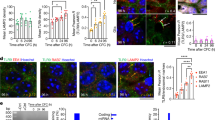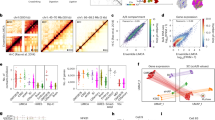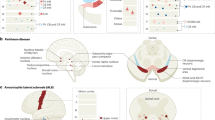Abstract
Approaches to differentiating pluripotent stem cells (PSCs) into neurons currently face two major challenges—(i) generated cells are immature, with limited functional properties; and (ii) cultures exhibit heterogeneous neuronal subtypes and maturation stages. Using lineage-determining transcription factors, we previously developed a single-step method to generate glutamatergic neurons from human PSCs. Here, we show that transient expression of the transcription factors Ascl1 and Dlx2 (AD) induces the generation of exclusively GABAergic neurons from human PSCs with a high degree of synaptic maturation. These AD-induced neuronal (iN) cells represent largely nonoverlapping populations of GABAergic neurons that express various subtype-specific markers. We further used AD-iN cells to establish that human collybistin, the loss of gene function of which causes severe encephalopathy, is required for inhibitory synaptic function. The generation of defined populations of functionally mature human GABAergic neurons represents an important step toward enabling the study of diseases affecting inhibitory synaptic transmission.
This is a preview of subscription content, access via your institution
Access options
Access Nature and 54 other Nature Portfolio journals
Get Nature+, our best-value online-access subscription
$29.99 / 30 days
cancel any time
Subscribe to this journal
Receive 12 print issues and online access
$259.00 per year
only $21.58 per issue
Buy this article
- Purchase on Springer Link
- Instant access to full article PDF
Prices may be subject to local taxes which are calculated during checkout




Similar content being viewed by others
Accession codes
References
Maroof, A.M. et al. Directed differentiation and functional maturation of cortical interneurons from human embryonic stem cells. Cell Stem Cell 12, 559–572 (2013).
Nicholas, C.R. et al. Functional maturation of hPSC-derived forebrain interneurons requires an extended timeline and mimics human neural development. Cell Stem Cell 12, 573–586 (2013).
Au, E. et al. A modular gain-of-function approach to generate cortical interneuron subtypes from ES cells. Neuron 80, 1145–1158 (2013).
Liu, Y. et al. Directed differentiation of forebrain GABA interneurons from human pluripotent stem cells. Nat. Protoc. 8, 1670–1679 (2013).
Pang, Z.P. et al. Induction of human neuronal cells by defined transcription factors. Nature 476, 220–223 (2011).
Yoo, A.S. et al. MicroRNA-mediated conversion of human fibroblasts to neurons. Nature 476, 228–231 (2011).
Pfisterer, U. et al. Direct conversion of human fibroblasts to dopaminergic neurons. Proc. Natl. Acad. Sci. USA 108, 10343–10348 (2011).
Caiazzo, M. et al. Direct generation of functional dopaminergic neurons from mouse and human fibroblasts. Nature 476, 224–227 (2011).
Victor, M.B. et al. Generation of human striatal neurons by microRNA-dependent direct conversion of fibroblasts. Neuron 84, 311–323 (2014).
Vierbuchen, T. et al. Direct conversion of fibroblasts to functional neurons by defined factors. Nature 463, 1035–1041 (2010).
Kim, J. et al. Functional integration of dopaminergic neurons directly converted from mouse fibroblasts. Cell Stem Cell 9, 413–419 (2011).
Son, E.Y. et al. Conversion of mouse and human fibroblasts into functional spinal motor neurons. Cell Stem Cell 9, 205–218 (2011).
Zhang, Y. et al. Rapid single-step induction of functional neurons from human pluripotent stem cells. Neuron 78, 785–798 (2013).
Chanda, S. et al. Generation of induced neuronal cells by the single reprogramming factor ASCL1. Stem Cell Reports 3, 282–296 (2014).
Taniguchi, H. et al. A resource of Cre driver lines for genetic targeting of GABAergic neurons in cerebral cortex. Neuron 71, 995–1013 (2011).
Ascoli, G.A. et al. Petilla terminology: nomenclature of features of GABAergic interneurons of the cerebral cortex. Nat. Rev. Neurosci. 9, 557–568 (2008).
Darmanis, S. et al. A survey of human brain transcriptome diversity at the single cell level. Proc. Natl. Acad. Sci. USA 112, 7285–7290 (2015).
Zecevic, N., Hu, F. & Jakovcevski, I. Interneurons in the developing human neocortex. Dev. Neurobiol. 71, 18–33 (2011).
Du, Z.-W. et al. Generation and expansion of highly pure motor neuron progenitors from human pluripotent stem cells. Nat. Commun. 6, 6626 (2015).
Harvey, K. et al. The GDP-GTP exchange factor collybistin: an essential determinant of neuronal gephyrin clustering. J. Neurosci. 24, 5816–5826 (2004).
Mayer, S. et al. Collybistin activation by GTP-TC10 enhances postsynaptic gephyrin clustering and hippocampal GABAergic neurotransmission. Proc. Natl. Acad. Sci. USA 110, 20795–20800 (2013).
Shimojima, K. et al. Loss-of-function mutation of collybistin is responsible for X-linked mental retardation associated with epilepsy. J. Hum. Genet. 56, 561–565 (2011).
Lesca, G. et al. De novo Xq11.11 microdeletion including ARHGEF9 in a boy with mental retardation, epilepsy, macrosomia, and dysmorphic features. Am. J. Med. Genet. 155A, 1706–1711 (2011).
Papadopoulos, T. et al. Impaired GABAergic transmission and altered hippocampal synaptic plasticity in collybistin-deficient mice. EMBO J. 26, 3888–3899 (2007).
Fode, C. et al. A role for neural determination genes in specifying the dorsoventral identity of telencephalic neurons. Genes Dev. 14, 67–80 (2000).
Casarosa, S., Fode, C. & Guillemot, F. Mash1 regulates neurogenesis in the ventral telencephalon. Development 126, 525–534 (1999).
Long, J.E., Cobos, I., Potter, G.B. & Rubenstein, J.L.R. Dlx1&2 and Mash1 transcription factors control MGE and CGE patterning and differentiation through parallel and overlapping pathways. Cereb. Cortex 19, i96–i106 (2009).
Long, J.E. et al. Dlx1&2 and Mash1 transcription factors control striatal patterning and differentiation through parallel and overlapping pathways. J. Comp. Neurol. 512, 556–572 (2009).
Stühmer, T., Anderson, S.A., Ekker, M. & Rubenstein, J.L.R. Ectopic expression of the Dlx genes induces glutamic acid decarboxylase and Dlx expression. Development 129, 245–252 (2002).
Potter, G.B. et al. Generation of Cre-transgenic mice using Dlx1/Dlx2 enhancers and their characterization in GABAergic interneurons. Mol. Cell. Neurosci. 40, 167–186 (2009).
Sun, A.X. et al. Direct induction and functional maturation of forebrain GABAergic neurons from human pluripotent stem cells. Cell Rep. 16, 1942–1953 (2016).
Yang, N. et al. Generation of pure inhibitory neurons by transcription factor programming. Protoc. Exch. http://dx.doi.org/10.1038/protex.2017.042 (2017).
Sebastiano, V. et al. Human COL7A1-corrected induced pluripotent stem cells for the treatment of recessive dystrophic epidermolysis bullosa. Sci. Transl. Med. 6, 264ra163 (2014).
Xu, Y. et al. Revealing a core signaling regulatory mechanism for pluripotent stem cell survival and self-renewal by small molecules. Proc. Natl. Acad. Sci. USA 107, 8129–8134 (2010).
Franke, B., Figiel, M. & Engele, J. CNS glia are targets for GDNF and neurturin. Histochem. Cell Biol. 110, 595–601 (1998).
Lois, C., Hong, E.J., Pease, S., Brown, E.J. & Baltimore, D. Germline transmission and tissue-specific expression of transgenes delivered by lentiviral vectors. Science 295, 868–872 (2002).
Levin, J.Z. et al. Comprehensive comparative analysis of strand-specific RNA sequencing methods. Nat. Methods 7, 709–715 (2010).
Trapnell, C., Pachter, L. & Salzberg, S.L. TopHat: discovering splice junctions with RNA-Seq. Bioinformatics 25, 1105–1111 (2009).
Dalerba, P. et al. Single-cell dissection of transcriptional heterogeneity in human colon tumors. Nat. Biotechnol. 29, 1120–1127 (2011).
Chanda, S., Marro, S., Wernig, M. & Südhof, T.C. Neurons generated by direct conversion of fibroblasts reproduce synaptic phenotype caused by autism-associated neuroligin-3 mutation. Proc. Natl. Acad. Sci. USA 110, 16622–16627 (2013).
Maximov, A. & Südhof, T.C. Autonomous function of synaptotagmin 1 in triggering synchronous release independent of asynchronous release. Neuron 48, 547–554 (2005).
Acknowledgements
This work was supported by the New York Stem Cell Foundation-Robertson Award (to M.W.), the NIH grants U19MH104172-01 and R01MH092931 (to M.W. and T.C.S.), HD032116 (to A.A.B.), MH049428 (to J.L.R.), P50-HG007735 (to H.Y.C.) and the DoD grant W81XWH-14-1-0307 (to M.W.). M.W. is a New York Stem Cell Foundation-Robertson Investigator, a Howard Hughes Medical Institute Faculty Scholar, and the Tashia and John Morgridge Faculty Scholar from the Child Health Research Institute at Stanford. T.C.S. is a Howard Hughes Medical Institute Investigator. N.Y. is supported by a 2014 NARSAD Young Investigator Award and a Siebel Foundation Scholarship. S.C. was supported by a postdoctoral grant (Stanford ChEM-H112878). H.A. was supported by postdoctoral fellowships from Swedish Research Council and Swedish Society for Medical Research.
Author information
Authors and Affiliations
Contributions
N.Y., S.C., T.C.S. and M.W. designed and performed the experiments and analyzed the data. S.M. helped with single-cell experiments and data analyses; Y.H.N. and J.A.J. provided experimental material and helped with biochemistry experiments. D.H. and C.E.A. helped with the disease modeling experiment. M.M. provided Myt1l antibody. H.A., Y.T., Q.F., A.A.B. and J.L.R. provided experimental material and helped with in vivo study and data analyses. O.W., M.L. and H.Y.C. helped with RNA-sequencing experiment and data analyses. N.Y., S.C. and M.W. wrote the paper.
Corresponding author
Ethics declarations
Competing interests
A.A.B. and J.L.R. are cofounders, stockholders, and currently on the scientific board of Neurona, a company studying the potential therapeutic use of interneuron transplantation.
Integrated supplementary information
Supplementary Figure 1 Identification of candidate factors for the generation of inhibitory neurons.
(a) Tuj1+ cells derived from human ES cells using different transcription factors 3 days after induction. Scale bars, 50 μm. (b) Schematic representation of the strategy to test candidate GABAergic neuron-inducing factors. (c) Example traces recorded from iN cells generated in different conditions. Left box: AMPAR-mediated spontaneous excitatory postsynaptic currents (sEPSC) recorded from an example cell (Ngn2-iN cell). Expanded view of events reveals fast kinetics (middle). Center box: GABAR-mediated spontaneous inhibitory postsynaptic currents (IPSCs, top) with slower kinetics (middle) recorded from an example cell (AM+Dlx2-iN cell). Right box: Spontaneous EPSCs with fast kinetics and spontaneous IPSCs with slower kinetics recorded from an example cell (AM+Dlx5-iN cell). (d) Representative traces of spontaneous postsynaptic currents (sPSCs) with fast kinetics as recorded from an Ngn2+EGFP-expressing neuron (red, i), or sPSCs with slow kinetics as recorded from an AM+Dlx2-expressing neuron (blue, ii), that were blocked by NBQX (50 μM, AMPAR-antagonist) or picrotoxin (50 μM, GABAAR-antagonist), respectively. Insets = expanded views of boxed areas (dotted lines). (e) Bar-graphs show the average amplitude (top panels) and τdecay (bottom panels) of sEPSCs (red) and sIPSCs (blue) in cells infected with indicated transcription-factor combinations. Bar-graphs represent mean values ± SEM (n = 5-7 cells). Filled circles represent values measured from individual cells. Asterisks (red) indicate absence of EPSC events in AM+Dlx2-expressing neurons.
Supplementary Figure 2 Transcription factor combination AMD induces the differentiation of human pluripotent stem cells into a homogenous population of GABAergic neurons with high yield and reproducibility.
(a) Representative traces of sIPSCs recorded from AMD-iN cells generated from three different human pluripotent stem cell lines. (b) AMD-iN cells generated from different cell lines show similar intrinsic properties in terms of membrane capacitance (Cm, bi), input-resistance (Rm, bii), and the average amplitude and frequency of the sIPSCs (biii and biv, respectively). Data are presented as mean ± SEM (one-way ANOVA, p > 0.05, n = 18 cells/condition), and filled circles represent values measured from individual cells.
Supplementary Figure 3 RNA-seq analysis of AMD-iN cells reveals expression of genes characteristic of different forebrain inhibitory neuron subtypes.
(a-d) Shown are human-specific RPKM expression values for the indicated genes in AMD-iN cells 32 days after transgene induction and co-cultured with mouse glia for 4 weeks. Total RNA was collected and sequenced, but only human-specific reads were considered. DA, dopaminergic; Glu, glutamatergic; ACh, cholinergic; cIN, cortical interneuron. Data are represented as mean of two biological replicates and the filled circles represent values measured from the 2 experiments.
Supplementary Figure 4 Detection of GABAergic neuron subtype markers in 5 WPI AD-iN cells.
(a) The robust generation of GABAergic neurons expressing CR, CB and SST from different human ES and iPS cells using Ascl1 and Dlx2. (b) ISL1 was observed in ~ 20% of the AD-iN cells and specific staining of NR2F2 in a small fraction of AD-iN cells (<2%) was detected (c). The bar graph shows the percentage of MAP2 positive cells that also express ISL1. Scale bar: 50 μm.
Supplementary Figure 5 Notch inhibitor enhanced the morphologic complexity of AD-iN cells.
(a) Schematic diagram represents experimental strategy for treating and characterizing cellular phenotype resulting from DAPT treatment in human neurons. (b-c) Brief DAPT treatment (3 or 4 days) at early stage during neuronal induction did not exhibit any effect on the neuronal morphology of AD induced neuronal cells revealed by MAP2 immunofluorescence. However, the mean process length of iN cells significantly increased from day 4 to day 5 after transgene induction independent of DAPT treatment. (d-g) Whereas brief DAPT treatment during day 2-7 after transgene induction was sufficient to improve the complexity of the neuron morphology in terms of the max process length and the total neurite outgrowth (e, g), continuous DAPT treatment from day 2 onwards was necessary to further increase the number of branches (d).
Supplementary Figure 6 Ascl1 and Dlx2 induction generates mature neurons that form functional inhibitory synapses.
(a) Spontaneous action potentials (APs) recorded from AD-iN cells, as replated on mouse glia at one week post-induction (WPI) and co-cultured for additional 4 (red, left) to 6 (blue, right) weeks (i); Representative traces (left) and average values (means ± SEM, n = 10 cells, right) of voltage-gated Na+ and K+ currents recorded from AD-iN cells at 6 weeks after glia co-culture (ii). (b) Immunoblot analyses of proteins extracted from AD-iN cells co-cultured with mouse glia cells or mouse glia only. Proteins are identified on the left (b-actin, GFAP, MAP2, Gephyrin, VELI, Munc18, Cask and SYT1 (Synaptotagmin-1). (c) Representative image showing vGAT and Synapsin 1 (SYN1) expression in AD-iN cells co-cultured with mouse glia. (d) Representative traces of sIPSCs (blue trace, i) and extracellular stimulation-induced evoked IPSCs (blue trace, ii), as recorded from AD-iN cells 7 WPI, and were subsequently blocked by 50 μM picrotoxin (red traces, i and ii), a pharmacological blocker of GABAARs.
Supplementary Figure 7 Continuous expression of AMD for 14 days was sufficient to induce neuronal cells with complex morphology and expressing synaptic marker SYN1.
AMD-treated human ES cells where co-cultured with mouse glia from 7 days after AMD-induction. Doxycycline was withdrawn at different time (days after AMD-induction as indicated in the upper-left corner of each image). Immunofluorescence analysis was performed on day 28.
Supplementary Figure 8 Long term stability of the GABAergic fate and continuous maturation of AD-iN cells in vivo.
(a,b) Representative image of an AD-iN cell graft in the mouse cortex 2 weeks post transplantation (w.p.t.). Transplanted cells were detected with EGFP (green) and human nuclei antibodies (blue) and expressed high levels of DCX (magenta). (b) Individual human DCX-positive cells show migrating morphologies. (c-e) After 3 months post transplantation (m.p.t.) we observed robust GABA and NeuN staining in the grafted cells. We also detected an increased number of NeuN+ cells over time.
Supplementary Figure 9 AMD-induced inhibitory neurons for human neurological disease modeling.
(a) Sequence of shRNAs targeting human Collybistin mRNA. (b) Patch-clamp configuration for postsynaptic recordings performed on iN cells expressing Collybistin shRNAs (EGFP-positive). Collybistin KD iN cells were co-cultured with Ngn2-induced human neurons (EGFP-negative, black arrowheads). Left, bright-field; Middle, EGFP-fluorescence view; and Right, as both views merged. Rec: recording electrode; Scale bars: 15 μm. The lower panel shows representative traces of AMPAR-mediated sEPSCs recorded from control (Ctrl, black) vs. Collybistin shRNA #4 –expressing (Sh#4, brown) neurons. (c) Cumulative plots (left) and average graphs (right) representing mean ± SE values of sEPSC amplitude (i, top) and event frequency (ii, bottom), for control vs. Collybistin shRNA #4 –infected neurons. (d) Cumulative plots (left) and average values (mean ± SE, right) of intrinsic membrane properties: membrane capacitance (Cm, i), input resistance (Rm, ii), and resting membrane potential (Vm, iii), as recorded from control (Ctrl, black) vs. Collybistin shRNA #4 expressing (Sh# 4, brown) human neurons. For cumulative plots, color-matched connected circles represent average values of corresponding parameters recorded from individual cells. For all experimental approaches, the numbers inside average bar-graphs indicate total number of cells recorded / number of independent batches. Statistical significance was tested by two-tailed, unpaired, Student’s t-test (ns = not significant, P > 0.05).
Supplementary Figure 10 Analysis of different transcription factor combinations confirmed that Ascl1 and Dlx2 are sufficient to generate SST-, CALB1(CB)-, CALB2(CR)-, VIP- and RELN-expressing cells.
qRT-PCR analysis was performed for indicated genes using AD-iN cells or iN cells generated by AD plus indicated factors. Expression levels (expressed as Ct values) are color coded as shown. In general, all the “AD plus 1” conditions generated GABAergic neuron populations similar to those induced by AD or AD with Myt1l. All conditions generated iN cells that robustly expressed SST, CALB1, SYN1 and vGAT. Whereas the expression levels of PVAL and NPY are less prominent and more variable.
Supplementary information
Supplementary Text and Figures
Supplementary Figures 1–10 and Supplementary Tables 1–2. (PDF 2486 kb)
Supplementary Protocol
A step-by-step protocol for AD-iN differentiation. (PDF 250 kb)
Rights and permissions
About this article
Cite this article
Yang, N., Chanda, S., Marro, S. et al. Generation of pure GABAergic neurons by transcription factor programming. Nat Methods 14, 621–628 (2017). https://doi.org/10.1038/nmeth.4291
Received:
Accepted:
Published:
Issue Date:
DOI: https://doi.org/10.1038/nmeth.4291
This article is cited by
-
Rapid and high-purity differentiation of human medium spiny neurons reveals LMNB1 hypofunction and subtype necessity in modeling Huntington’s disease
Inflammation and Regeneration (2024)
-
Defined co-cultures of glutamatergic and GABAergic neurons with a mutation in DISC1 reveal aberrant phenotypes in GABAergic neurons
BMC Neuroscience (2024)
-
Liprin-α proteins are master regulators of human presynapse assembly
Nature Neuroscience (2024)
-
iPSC-derived models of PACS1 syndrome reveal transcriptional and functional deficits in neuron activity
Nature Communications (2024)
-
Brain stars take the lead during critical periods of early postnatal brain development: relevance of astrocytes in health and mental disorders
Molecular Psychiatry (2024)



